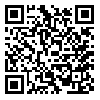دوره 8، شماره 4 - ( 8-1402 )
جلد 8 شماره 4 صفحات 685-674 |
برگشت به فهرست نسخه ها
چکیده: (1028 مشاهده)
Background: Many households in urban areas suffer from severe food insecurity. In Ethiopia, current economic recession, pandemic, locust invasion, and conflict, disproportionately aggravated the problems. This study aims to assess food insecurity in household and its factors in the Eastern Ethiopia. Methods: A community-based, cross-sectional study was conducted to assess 616 households in urban areas of Eastern Ethiopia using simple random sampling. FANTA Indicator Guide (v.3) Questionnaires were used as data collection tool. Then, the information was entered into Epi-data version 3.02 and exported to SPSS version 21. To determine factors affecting household food insecurity, binary regression analysis was performed, and a p-value of < 0.05 at a 95% confidence interval was considered statistically significant. Model fitness was checked using the Hosmer-Lemeshow test. Results: The prevalence of household food insecurity was 41.7% (95% CI: 37.4–45.6). The following factors were determined as food insecurity predictors: household head's sex [Adjusted Odds Ratio (AOR)=1.75, 95% CI: 1.08–2.84], household head's education (AOR= 0.52, 95% CI: 0.33–0.99), mother's occupation [AOR= 0.3, 95% CI: 0.19–0.57], households with the medium wealth index (AOR =1.72, 95% CI: 1.06–2.78) and households with the lowest wealth index (AOR=4.01, 95% CI: 2.35–6.86). Conclusions: The prevalence of household food insecurity in urban areas of Eastern Ethiopia is high. The food insecurity was significantly affected by residency, education, occupation, and wealth index. The government should focus on socio-economic policies targeting the vulnerable and improve their economic status.
Corresponding Author:Tariku Derese
View Orcid in Profile
You can search for this author in PubMed Google Scholar Profile
Corresponding Author:Tariku Derese
View Orcid in Profile
You can search for this author in PubMed Google Scholar Profile
دریافت: 1401/1/12 | انتشار: 1402/8/29 | انتشار الکترونیک: 1402/8/29
| بازنشر اطلاعات | |
 |
این مقاله تحت شرایط Creative Commons Attribution-NonCommercial 4.0 International License قابل بازنشر است. |


